Lely Pumping Station
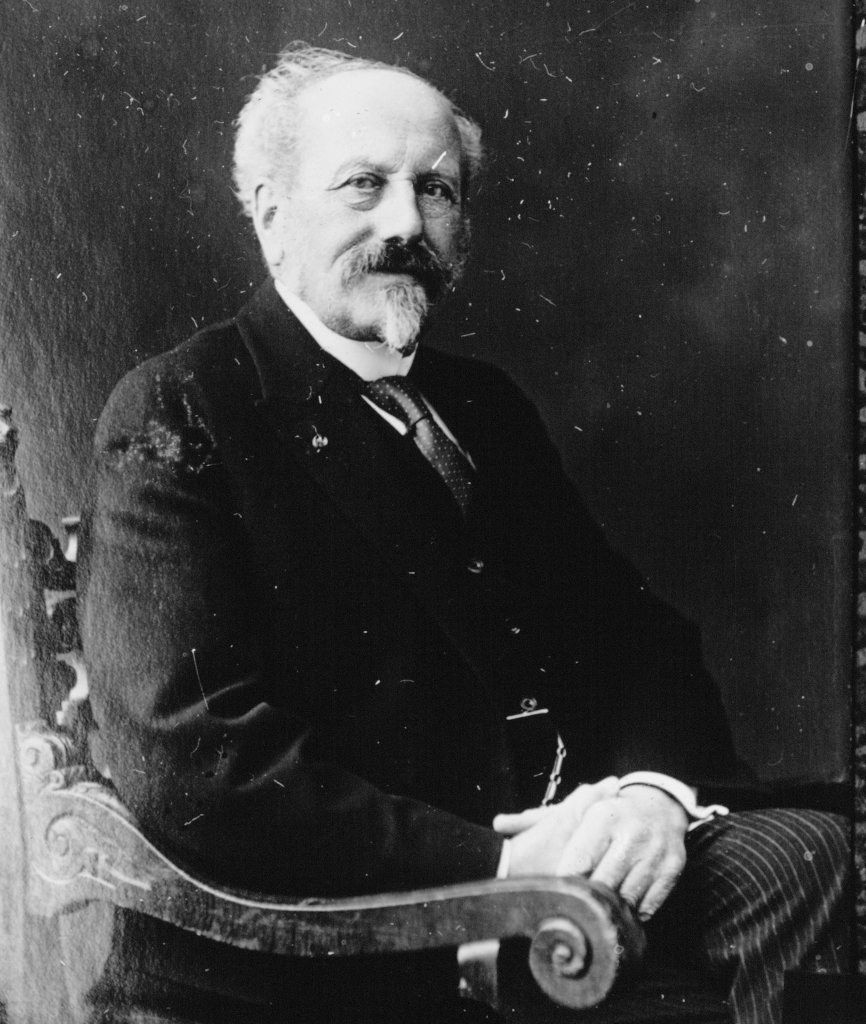
On the night of January 13-14, 1916, the Zuiderzee went wild. Dikes broke in several provinces. The Westfriese Omringdijk stood its ground. In response to the disaster, the Zuiderzee Act was passed in 1918. It largely followed the ideas of civil engineer and Minister of Water Management Cornelis Lely (1854-1929, photo): the Zuiderzee was interrupted by a sea dike between North Holland and Friesland, the Afsluitdijk. This created the IJsselmeer between North Holland, Friesland, Overijssel and Utrecht.
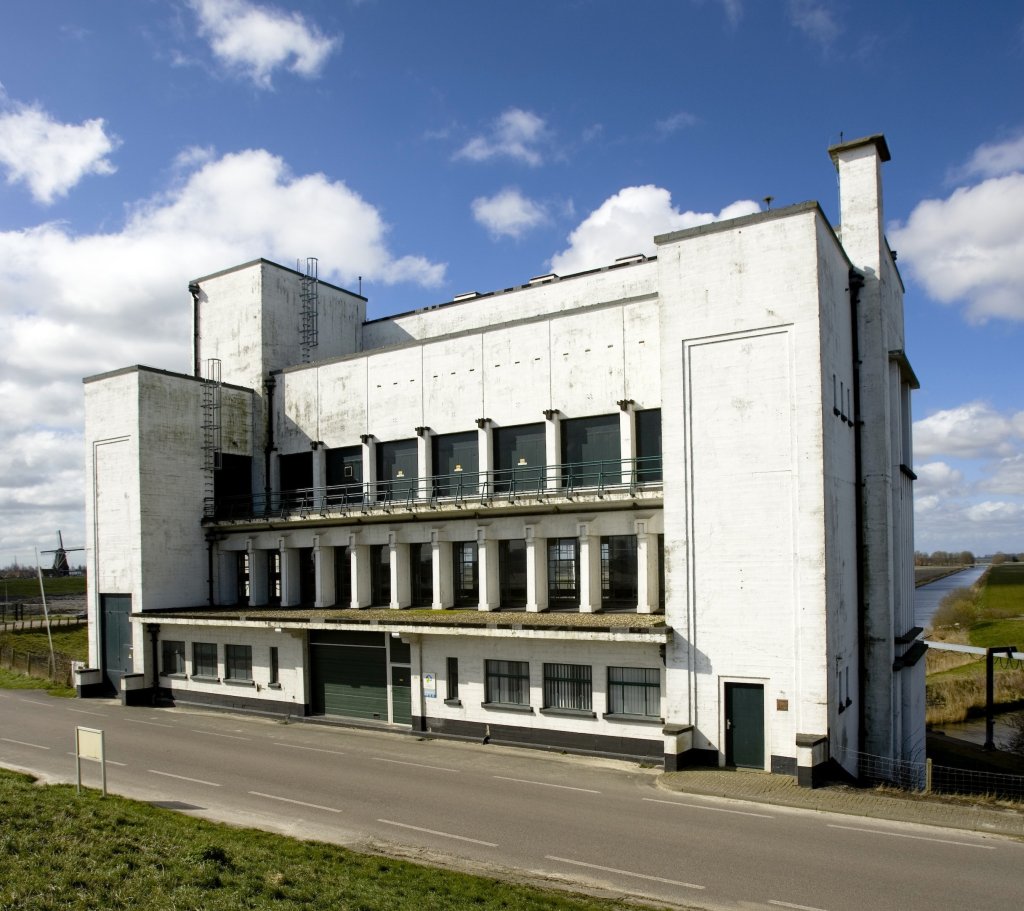
Lely had devised a number of polders to be founded in the IJsselmeer. The Netherlands could make good use of new farmland. The Wieringermeer was the first large IJsselmeer polder (1927-1930). At the very southeast of the polder, near Medemblik and the Omringdijk, we find the pumping station named after Lely.

To reclaim the Wieringermeer, two pumping stations were built: Lely near Medemblik and Leemans near Den Oever. The photo shows the large building pit that was specially constructed in the still salty water for the construction of Lely. By the end of 1929, the pumping station was ready for use. Cornelis Lely was not allowed to witness this: he had died in January that year.
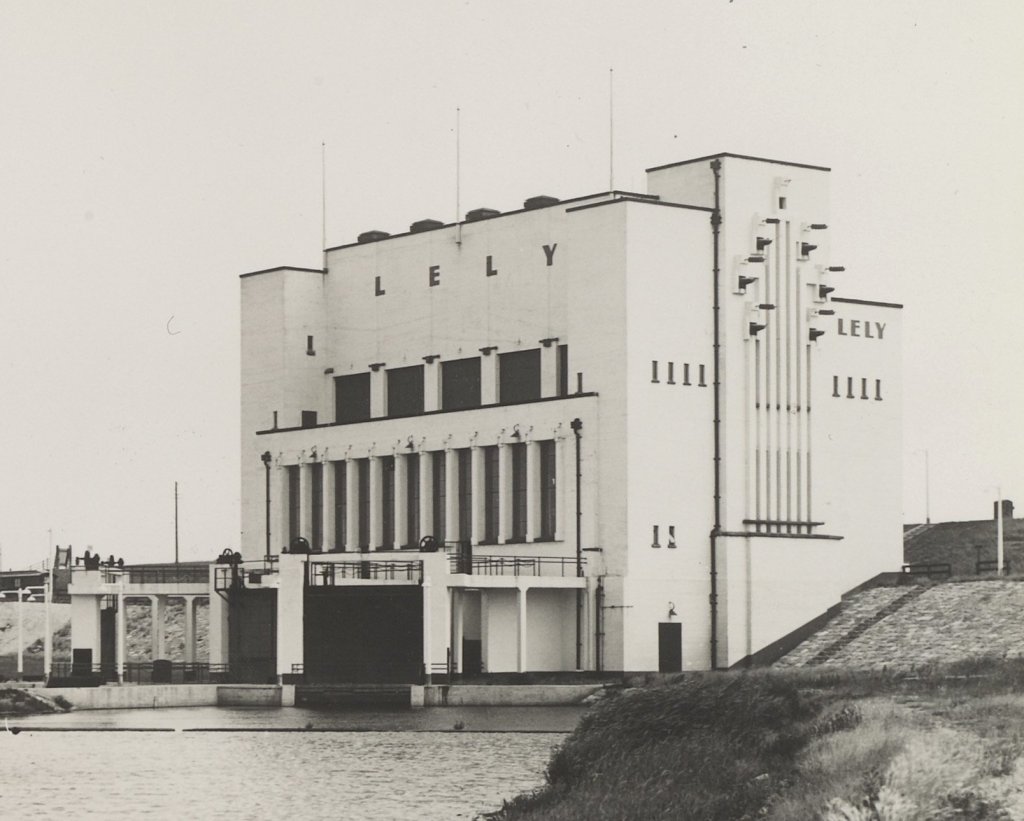
The pumping station is definitely an eye-catcher. Architect Dirk Roosenburg designed a building in modernist style: business-like white with straight lines and an emphasis on symmetry. The installation was also modern. Whereas many pumping stations still ran on steam or diesel, Lely's pumps were driven by three powerful electric motors.
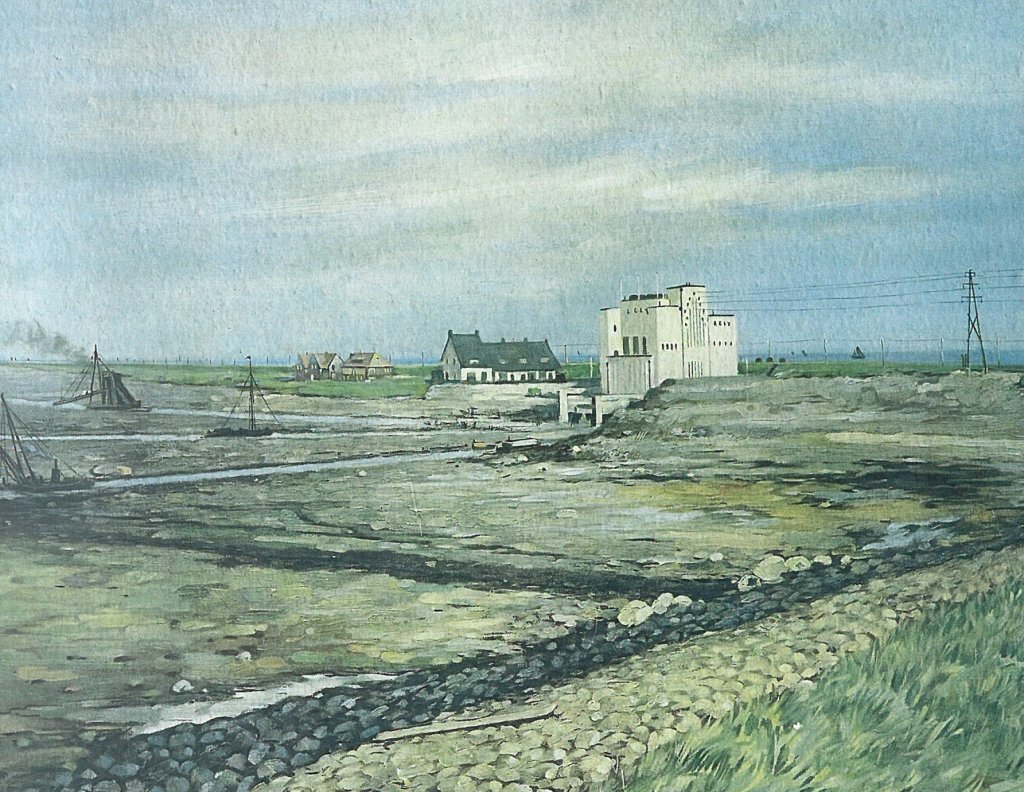
The Lely and Leemans pumping stations were officially put into operation in February 1930. In six months they grinded the entire Wieringermeer dry. On this school picture we see pumping station Lely in the newly drained polder. The engineers lived in the white houses next to the pumping station. There the first child of the Wieringermeer was born. On the right we see an electricity pole. A new high-voltage cable was laid especially for the pumping station. The transformer room upstairs supplied both Lely and Medemblik with power until the 1980s.
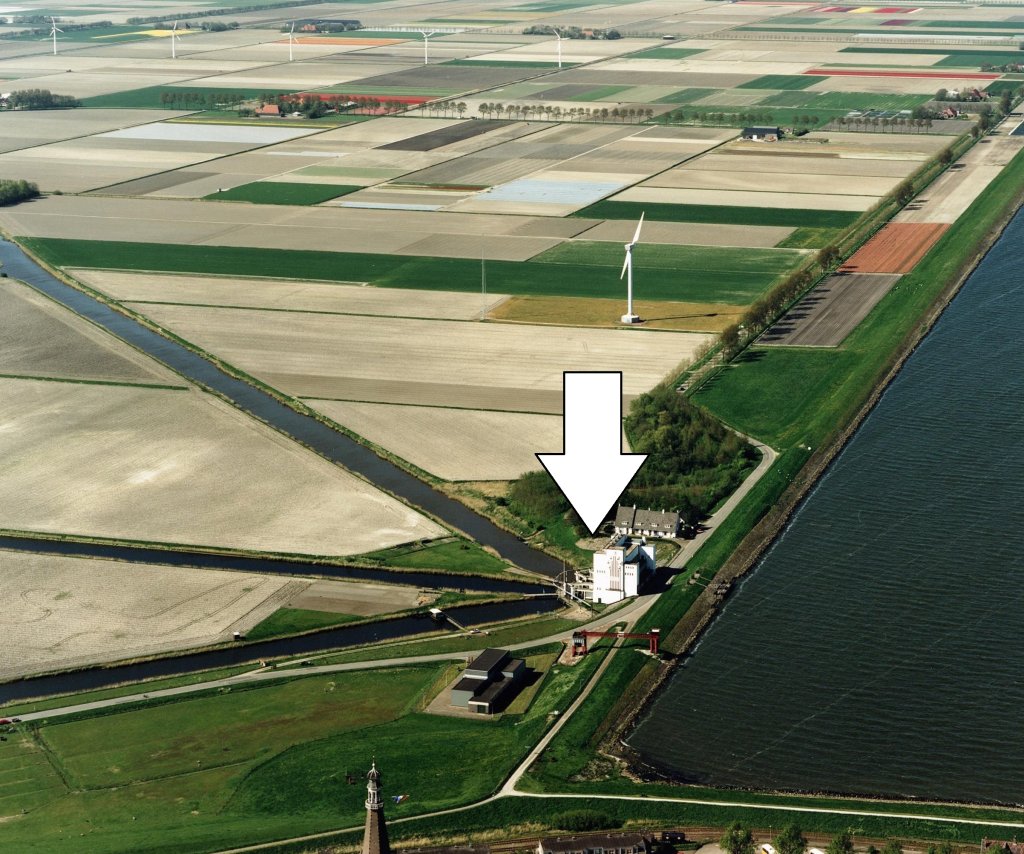
The Wieringermeer lies four to five meters below NAP. By comparison, the water level in the IJsselmeer is between 0.1 and 0.4 meters below NAP. The water from the Wieringermeer flows through three channels to the pumping station (arrow on the photo). In the polder, these branch off into smaller waterways.
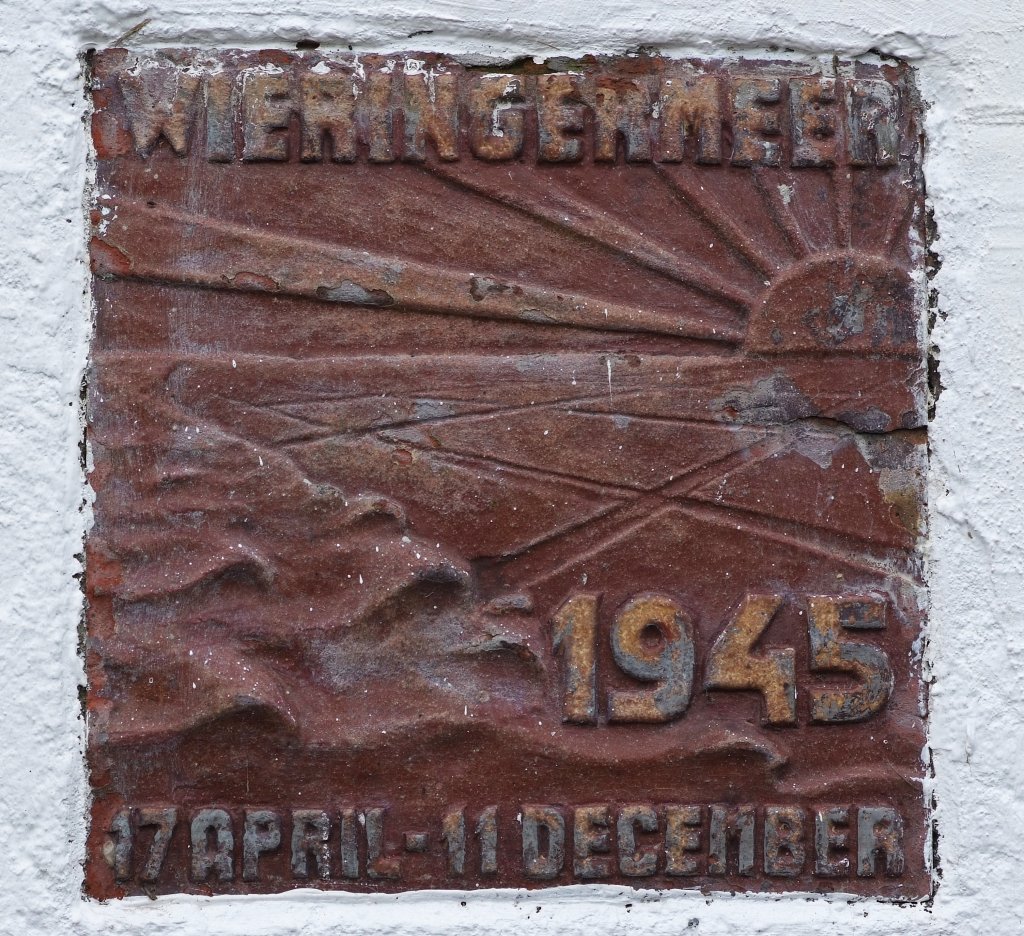
In the front facade of the pumping station is this memorial plaque bricked in. On April 17, 1945, the Germans blew up the Wieringermeer dike. As far as is known, there were no casualties, but the damage was enormous. The disaster taught that it was a good idea to place the electric motors and transformer room of the pumping station on the upper floors. They were spared.
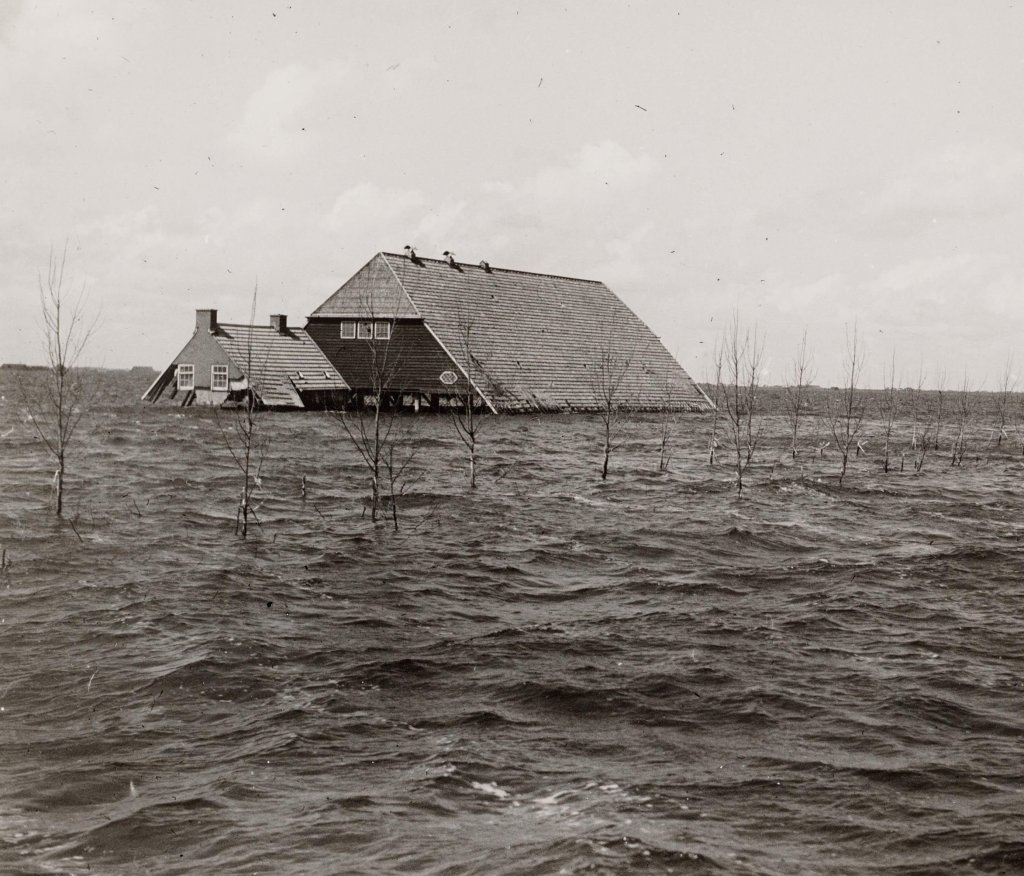
The flooding of the Wieringermeer was planned and the Germans had kept the level of the IJsselmeer high on purpose for a year. By April 1945, however, the war was as good as over. Why the Germans carried out the plan just as well is not entirely clear.
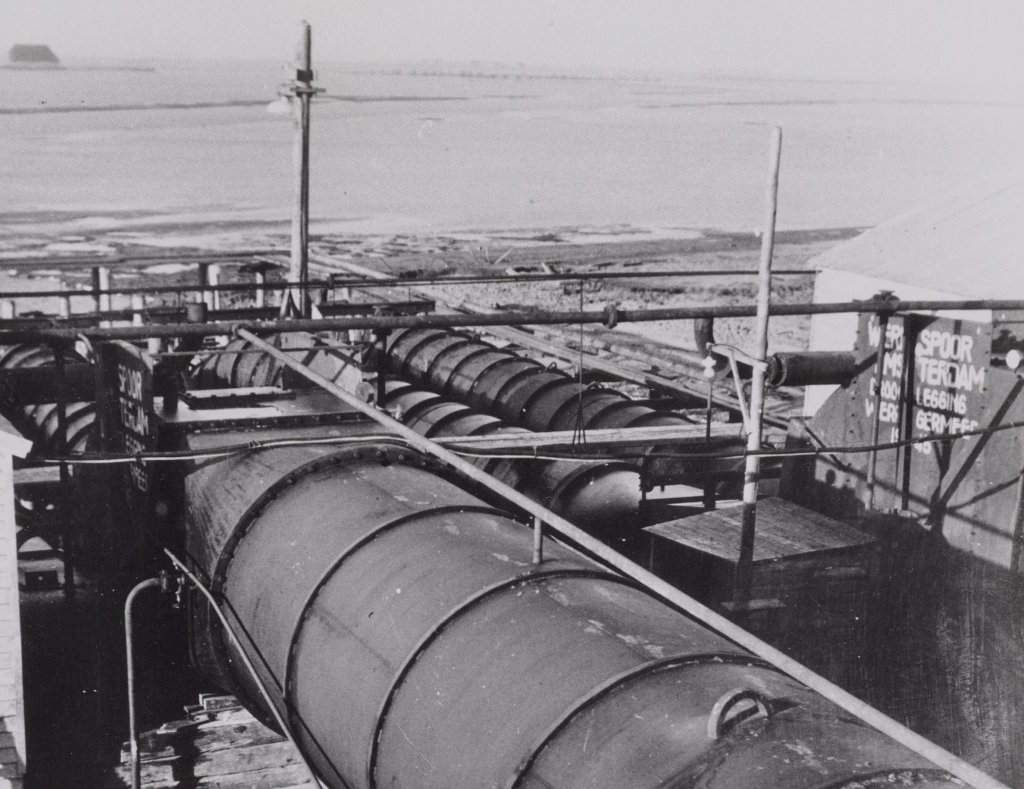
It was very important to remove the water from the flooded polder before the winter. Because Lely and sister pumping station Leemans at Den Oever did not have sufficient capacity for this, auxiliary pumps were installed. Lely received help from four such pumps. In December '45, the polder was again drained. The next year there was "normal" harvesting, because the water pumped out was fresh, a stroke of luck.
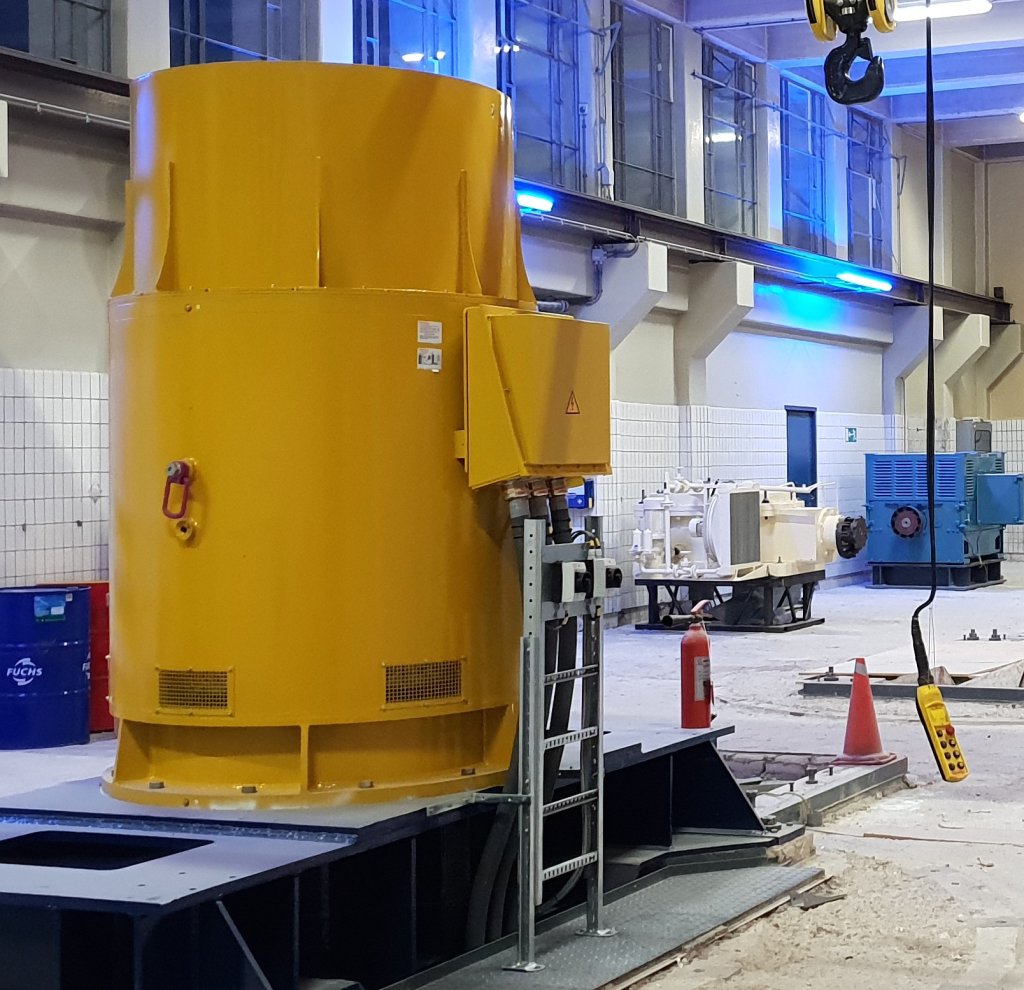
The plant at Lely pumping station was recently renovated. Larger engines are running and the pumps have been given different impellers so that fish can swim safely between them. The photo shows a new engine, much larger than the old, white one in the background.